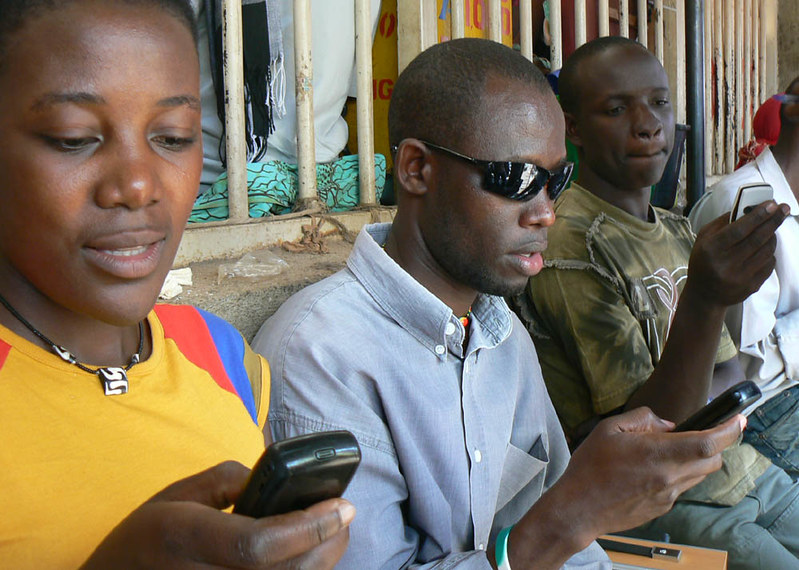A theme I have hardly blogged is what the business perspective teaches us about how microfinance does and can work. A few years ago ABN AMRO commissioned CGD to write a report on why some microfinance institutions (MFIs), including non-profits, manage to cover costs, attract capital, and grow to serve more people---in a phrase, to succeed as businesses. Chapter 5 of the book (draft due soon) is based on that paper. Having worked this seam already, I think about it less now.In writing that report with Uzma Qureshi, I came to appreciate that microfinance as we observe it today is the outcome of an ongoing Darwinian process. Aspects of microfinance that seem almost definitional in the public imagination---credit, women, groups---originally arose for pragmatic reasons: they helped young organizations serve poor clients in volume without going broke. Joint liability lending through groups, for example, shifts the jobs of selecting borrowers and enforcing repayment away from the lenders onto the borrowers. It seems to work better with women because they are more sensitive to peer pressure. And it lowers the lenders' costs and interest charges. Through this lens, I see Muhammad Yunus as a Henry Ford, a Schumpeterian agent of creative destruction.Uzma and I swiped this insight from a provacative paper about Bangladeshi microcredit by Pankaj Jain and Mick Moore called "What makes microcredit programmes effective? Fashionable fallacies and workable realities." It concludes thus:
We end with a compliment and a paradox. The compliment is that we are deeply impressed by the organisational entrepreneurship of the people who established, managed and adapted the big [MFIs]....Unlike most heralded grassroots development programmes, these are virtually entirely homegrown. No expatriate advisers appear in leading roles; aid donors gave money and little else. But, to justify the continuing flow of that money...leaders and spokespersons have gradually found themselves, through a combination of circumstances and pressures, purveying a misleading interpretation of the reasons for their success. They emphasise a few elements in a complex organisational system, and are silent on many key components. That is the paradox. To properly appreciate the great achievements of the microcredit movement, one has to be more skeptical of its self-image than is normally considered polite or respectful.Their impolite thesis is that even though microfinance is about more than making money, you can only understand why it works in the ways it does if you recognize its need to make money. So when I hear about how mobile phones and smart cards will revolutionize microfinance, I ask, What's the business case? How does it solve the business problems traditional microfinance solves? This seam I haven't worked yet.But I just read Ignacio Mas's excellent "Economics of Branchless Banking" article in the MIT magazine innovations, To read it, I'm sorry to say, you first have to execute a long-distance, peer-to-peer, electronic financial transaction. It would be worthwhile if you want an insightful analysis of technical possibilities and businesses realities intersect to define new ways to bank the poor. (Mas is now the #2 in the Financial Services for the Poor program of the Gates Foundation, which foundation is a major funder of CGD, though not of my work in particular.)From the customer's point of view there are perhaps two major kinds of high-tech banking: that using ATM-like machines and that using mobile phones. (Tangent: Rodrik in praise of the ATM.) ATM's have done better in Latin America, especially Brazil. Phone banking has done better in Africa. The one break-out success to date is Safaricom's M-PESA phone banking system in Kenya, which has 6 million customers as of a few months ago. So far financial high technology has mostly helped poor people by making it easier for them to move money. Many Brazilians now pay their utility bills electronically, through machines at local stores. Through M-PESA, Nairobians send money back to their families in their native villages. (But during the post-election violence flows reversed.)The success of the new money transfer systems helpfully remind us that credit and savings (and even insurance) are not the only financial services valuable to the poor. For mobile people, money transfers maintain familial financial ties stressed by distance. Can you find traditional microfinance in Mas's typology, taken from the article?
Disclaimer
CGD blog posts reflect the views of the authors, drawing on prior research and experience in their areas of expertise. CGD is a nonpartisan, independent organization and does not take institutional positions.





